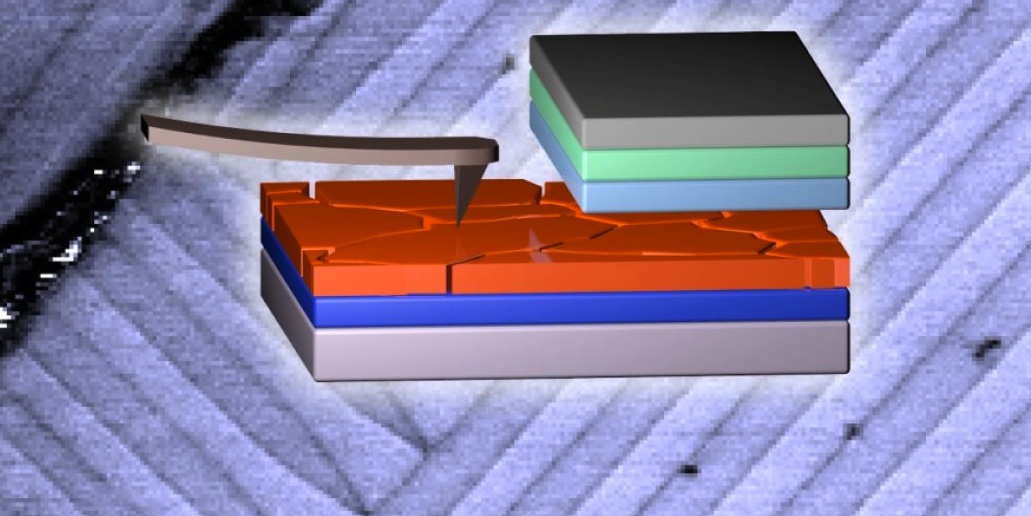Solar cells based on perovskites can convert more than 20% of the incident light directly into usable power. However, the reasons behind this high efficiency potential are so far mainly unknown.
In their research into the underlying physical mechanisms, scientists at the Karlsruhe Institute of Technology (KIT) have for the first time detected strips of nanostructures with alternating directions of polarization in the perovskite layers. The structures could serve as transport paths for charge carriers, as the KIT researchers reported in the last Energy & Environmental Science Journal.
The perovskites used in the project “NanoSolar”, financed by the Baden-Württemberg Foundation, are metal-organic compounds with a crystalline structure and outstanding photovoltaic properties. The aim of the multidisciplinary KIT team headed by Dr. Alexander Colsmann is to make the light-absorbing layers of the solar cells more robust to environmental impacts, and to replace the lead contained therein with more environmentally friendly elements. For this purpose, the researchers analyzed perovskite solar cells using a special type of scanning force microscopy, and found ferroelectric nanostructures within the light-absorbing layers.
Popular content
According to KIT, ferroelectricity means that crystals have an electrical polarization and form regions with the same polarization direction, known as domains. The scientists have now observed that during the thin layer development, the lead iodide perovskite forms approximately 100 nanometer-wide strip-shaped ferroelectric domains with alternating electric fields. These might play a decisive role in the transport of the photogenerated charges out of the solar cell and, thus, explain the special properties of perovskites in photovoltaics. Previous theoretical work had predicted the existence of these nanostructures, but until now no evidence had been found.
By Carl Johannes Muth
This content is protected by copyright and may not be reused. If you want to cooperate with us and would like to reuse some of our content, please contact: editors@pv-magazine.com.


By submitting this form you agree to pv magazine using your data for the purposes of publishing your comment.
Your personal data will only be disclosed or otherwise transmitted to third parties for the purposes of spam filtering or if this is necessary for technical maintenance of the website. Any other transfer to third parties will not take place unless this is justified on the basis of applicable data protection regulations or if pv magazine is legally obliged to do so.
You may revoke this consent at any time with effect for the future, in which case your personal data will be deleted immediately. Otherwise, your data will be deleted if pv magazine has processed your request or the purpose of data storage is fulfilled.
Further information on data privacy can be found in our Data Protection Policy.